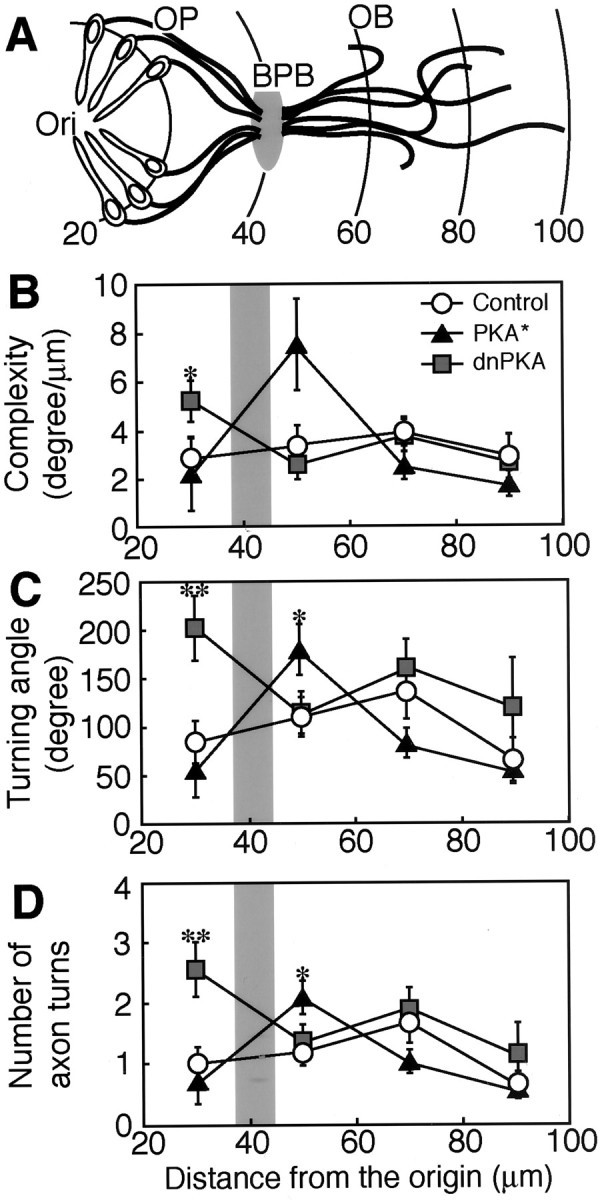Fig. 6.

Regional differences in the effects of constitutively active and dominant-negative PKAs on the turning of olfactory sensory neurons in zebrafish embryos at 50 hpf.A, A schematized model for the position of the olfactory placode (OP), the olfactory bulb (OB), and their boundary (BPB). The axon trajectory field was subdivided into areas of 20 μm width based on the distance from the nasal pit. Arches and values indicate the distance from the nasal pit (Ori) in micrometers.B, Regional complexity of axons. Complexity value was calculated by dividing the summation of turning angles in each area by the summation of the axon length within the area. C, Turning angles of axons. The summation of turning angles in each area is compared. D, Number of axon turns. The numbers of flections with the angle larger than 30° in each area are compared. All values represent mean ± SEM. Shaded regions inB–D indicate the position of the BPB. The numbers of axons analyzed in the areas of 20–40, 40–60, 60–80, and 80–100 μm were 17, 33, 33, and 17, respectively, for embryos injected with control GFP vector; 9, 30, 30, and 17, respectively, for embryos injected with PKA*-GFP vector; and 20, 28, 27, and 14, respectively, for embryos injected with dnPKA-GFP vector. *p < 0.05; **p < 0.01.
